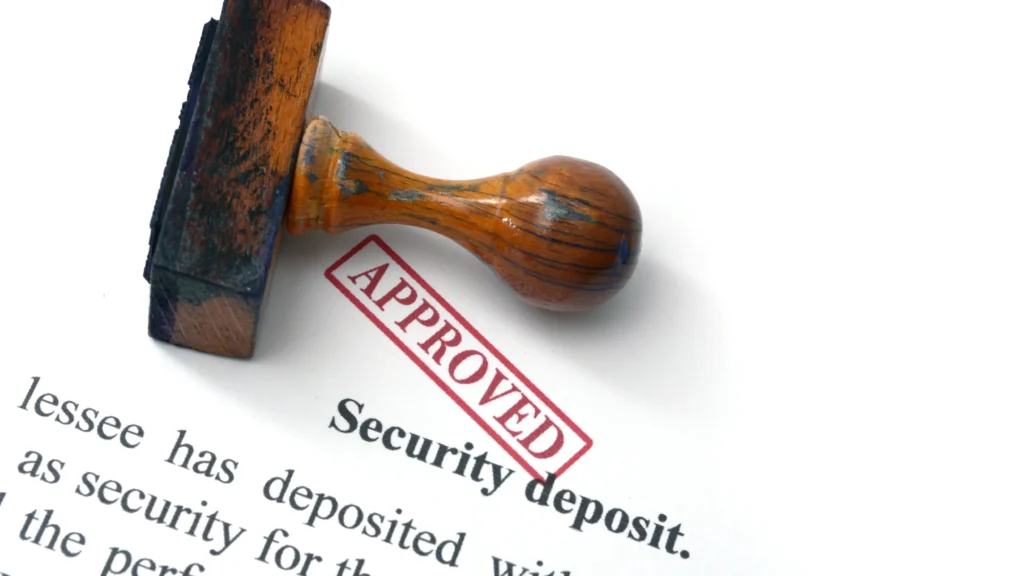- From Contentious Chaos to Professional Procedure
- 1. The Foundation for a St. Louis Landlord: It All Starts with the Move-In
- 2. Communication is Key: The 30-Day Notice Period
- 3. Missouri Law & The Security Deposit: How to Handle Deposits in Missouri (Without Getting Sued)
- The Property Management STL Advantage: Don't Lose Money on Move-Out
The move-out process is, without question, the most contentious and financially risky phase of a tenancy for a St. Louis landlord. After months or years of smooth rent collection and routine maintenance, the final 30 days are where profitability and legal compliance are truly tested. It’s where subjectivity over cleaning expectations, arguments over a wall scuff, and outright misunderstandings of the law collide—all centering on the tenant’s security deposit.
For too many independent property owners, the move-out inspection is a rush job, a quick walk-through that results in vague deductions and angry phone calls. This casual approach is precisely what leads to ruin: the results are often ruined landlord-tenant relationships, delayed property turnover, and—most critically—expensive security deposit disputes that can wipe out a year’s worth of profit in court fees.
From Contentious Chaos to Professional Procedure
This comprehensive guide is designed to transform the stress and risk associated with the move-out into a systematic, repeatable business procedure. We will provide you with the exact strategies and documentation required to successfully navigate the final steps of a tenancy in the St. Louis metropolitan area.
By implementing a rigorous, detail-oriented system—beginning with the initial move-in report and culminating in a legally compliant final accounting—you can proactively protect your investment. We will equip you with the best practices for using a tenant move-out checklist, understanding the critical difference between normal wear and tear versus deductible damage, and executing the mandatory procedures under Missouri security deposit law. This is your definitive, step-by-step blueprint to navigating the move-out professionally, legally, and profitably.
1. The Foundation for a St. Louis Landlord: It All Starts with the Move-In

A smooth, defensible move-out is impossible without a thorough move-in process. The condition of the property on the day the tenant leaves is measured against its condition on the day they arrived. Establishing this baseline is the critical first step in protecting your rental property, proving your professionalism, and mitigating the risk of a lawsuit.
The Critical Move-In Inspection and Checklist
A signed rental inspection form is your primary legal defense. This document, executed before the tenant gets the keys, must be a detailed, room-by-room inventory of the property’s condition. This is not a casual form; it is a legal contract supplement.
- Be Specific: Do not use vague terms like “good” or “acceptable.” Instead, note: “New, stain-free carpet in the living room, installed 1/1/2023,” “small chip on bathroom sink countertop, visible on left side,” or “freshly painted white walls in the kitchen, no scuffs.”
- Joint Signature: Both the St. Louis landlord (or property manager) and the tenant must sign and date the checklist. Providing the tenant 3–7 days after move-in to complete and return their copy with any noted discrepancies adds a layer of professional transparency and credibility, neutralizing future claims that damage was pre-existing.
The Power of Photos and Video Documentation (The Visual Contract)
Written checklists can be debated; visual evidence is far harder to refute. Date-stamped photos or video of the property’s condition before the tenant takes occupancy provide irrefutable proof.
- Document Everything: Capture every wall, every floor, the interior and exterior of all appliances, and all fixtures. Use wide-angle shots to show context and close-ups to show detail.
- Focus on the Flaws: Specifically photograph any minor pre-existing defects. Documenting these ensures the tenant cannot be charged for minor scuffs or chips that were present from the start. This documentation is the absolute standard against which the final walk-through condition will be judged. We recommend using a camera or app that permanently embeds the date into the photo file data.
2. Communication is Key: The 30-Day Notice Period

Once a tenant submits their lease termination notice, proactive and clear communication is the best defense against confusion and dispute. This step formally manages the expectations of the exit and directs the tenant toward a clean transition.
Acknowledge the Notice and Confirm Dates
Always confirm receipt of the tenant’s notice to vacate in writing. This confirms the official termination date and the deadline for key return, which is essential for determining your 30-day legal window.
Provide a Clear Tenant Move-Out Checklist
Immediately send the tenant a clear, written tenant move-out checklist detailing your expectations for cleaning and property conditions. This is your chance to explicitly state what is required to receive a full refund of their security deposit.
The list should meticulously include:
- Cleaning Requirements: Specify that the unit must be returned to the move-in level of cleanliness. This includes inside and outside of all appliances (oven, refrigerator, dishwasher), interior window glass and sills, light fixtures, and all bathroom areas.
- Removal of Items: Clear instructions for the disposal of all trash and removal of all personal property. Clearly state that costs for professional removal of any abandoned property will be deducted from the deposit. Refer tenants to local St. Louis County or City refuse guidelines for bulk trash disposal.
- Key Return: Instructions on exactly how and when keys, garage door openers, and access fobs are to be returned. Missing keys can cause legitimate deductions for re-keying or lock changes.
- Forwarding Address: A mandatory request for a forwarding address where the deposit and/or itemized statement will be sent. Reminder: Under Missouri law, mailing the final accounting to their last known address is legally compliant, even if a new one is not provided.
Scheduling the Final Walk-Through Inspection as a St. Louis Landlord

The landlord-tenant law in Missouri grants the tenant a right to be involved in the inspection process.
- Required Notice: Under Missouri Revised Statutes § 535.300, the St. Louis landlord must give the tenant reasonable notice in writing of the date and time when the landlord will inspect the unit to determine the amount of the deposit to be withheld. The tenant has the right to be present at the final walk-through.
- The Power of the Pre-Move-Out Inspection: It is highly recommended to offer an optional pre-move-out inspection one to two weeks before the official move-out date. This allows you to point out deficiencies (e.g., the grease in the oven, large holes that need patching) and gives the tenant a chance to correct them before the lease ends, often resulting in a full refund and avoiding deductions entirely.
3. Missouri Law & The Security Deposit: How to Handle Deposits in Missouri (Without Getting Sued)
This is the most critical and highest-stakes section of the entire move-out process. Your adherence to Missouri security deposit law is what protects you from legal exposure and allows you to enforce your deductions.
The 30-Day Rule: Your Legal Deadline (Missouri Revised Statutes § 535.300)

Missouri Revised Statutes § 535.300 is absolute. The landlord has exactly 30 days after the tenancy terminates (the date the tenant moves out and returns keys, or the lease end date, whichever is later) to take one of two actions:
- Return the entire security deposit to the tenant.
- Furnish the tenant with a written, itemized list of the damages for which the deposit is withheld, along with the balance of the deposit.
Warning: The Double Damages Penalty Failure to strictly follow this 30-day deadline (or wrongfully withholding funds) opens you up to severe penalty. The tenant may recover as damages twice the amount wrongfully withheld (See Missouri Legal Services for details on this statute). For example, if you wrongfully withhold $1,000, you could owe the tenant $2,000 plus their court costs. Meticulous timing and documentation are non-negotiable for returning security deposit Missouri.
Normal Wear and Tear vs. Property Damage: The Legal Line
The law explicitly states that a landlord can only deduct costs necessary “to restore the dwelling unit to its condition at the commencement of the tenancy, ordinary wear and tear excepted.” This distinction is the core of most disputes.
Normal Wear and Tear (NOT Deductible)
This is the inevitable, gradual deterioration from regular use and aging. It is the landlord’s cost of doing business.
- Paint/Walls: Faded paint, minor scuffs, and a reasonable number of small nail holes (e.g., from hanging pictures) that are easily patched. The landlord is responsible for repainting after an item’s useful life (typically 3–5 years).
- Flooring: Worn or flattened carpet in high-traffic areas (doorways, hallways), minor scratches on wood floors.
- Appliances: Reduced efficiency of older appliances, loose door handles, or squeaky hinges.
Damage (Deductible)

Damage is harm to the property that results from the tenant’s negligence, abuse, misuse, or carelessness. This is what you can legally deduct from the deposit.
- Walls: Large holes in the drywall, water stains, crayon/marker drawings, or unauthorized painting in non-neutral colors that require a professional repaint.
- Flooring: Rips, tears, deep burns, or severe pet urine stains that require professional treatment or replacement. Deductible amount must factor in depreciation: If a carpet has a 5-year expected life (referencing HUD guidelines) and is 4 years old, you can only charge the tenant for 1/5th (20%) of the replacement cost.
- Cleaning: Excessive filth (e.g., heavy grease-caked oven, mold in the shower due to negligence, significant pet hair) that requires industrial-level cleaning to restore the unit to its move-in condition.
Legitimate Deductions from the Security Deposit
What can a landlord deduct from a security deposit in Missouri?
- Unpaid Rent and Fees: Any outstanding rent, late fees, or unpaid utilities clearly defined in the lease.
- Damage Repairs: Costs to repair property damage that exceeds normal wear and tear standards.
- Cleaning Costs: Reasonable and actual costs to clean the unit to restore it to the move-in condition.
- Loss of Rental Income: Financial losses suffered due to a tenant’s failure to give adequate notice or abandonment of the property.
St. Louis Landlord Final Inspection and Documentation: Closing the Tenancy
This is the documentation phase. A meticulous, side-by-side comparison of the move-in and move-out conditions is your greatest asset.
Conduct the Final Walk-Through (Using the Baseline)

Use the original, signed move-in checklist and your move-in photos/video as the sole reference.
- Systematic Review: Go room by room, checking the current condition against the original checklist.
- Identify & Quantify Damages: Clearly note any item that constitutes damage or excessive cleaning required. Do not rely on memory.
- Tenant Presence: If the tenant is present (per the required notice), walk them through the damages in real-time. This immediate transparency significantly reduces the likelihood of a legal challenge later.
Document Everything (The Double-Check)
Immediately after the tenant vacates, or during the final inspection, document everything again.
- Post-Move-Out Photos/Video: Take a new set of detailed, date-stamped photos and video of all damages and areas needing excessive cleaning. This evidence is crucial proof for the court.
- Damage Quotes: Get written quotes or receipts for all repair and cleaning work you intend to deduct. A judge often rejects vague cost estimates without backup.
Creating the Itemized Deduction List
If you are withholding from the deposit, your itemized list of damages for security deposit must be transparent, specific, and accurate.
- Specificity is Paramount: Avoid vague descriptions like “cleaning and repairs.”
- Bad: “$450 for cleaning and general repairs.”
- Good: “$150 to patch, prime, and repaint two large holes (4″+) in the bedroom drywall. Attached receipt from STL Repair Services. $125 for deep cleaning of oven and refrigerator interior (excessive grease/food residue). Attached invoice from Avenue Cleaning Co.”
- Attach Receipts: Always attach copies of receipts, invoices, or professional estimates for the work performed or scheduled.
- Final Accounting: The statement must clearly show:
- Original Security Deposit Amount.
- Total Itemized Deductions (with details).
- Remaining Balance Being Returned.
Final Deposit Return Procedures

Mail the full package—the itemized list, any remaining refund check, and copies of all receipts—to the tenant’s last known address via Certified Mail, Return Receipt Requested. This documentation proves you complied with the 30-day deadline, which is non-negotiable under the Missouri security deposit law.
The Property Management STL Advantage: Don’t Lose Money on Move-Out
For the typical St. Louis landlord, managing the move-out is a time-consuming, stress-inducing, and legally high-risk event, which Avenue Residential Leasing & Management handles on your behalf. Our advantage is a systematic, time-tested process designed to protect your money and ensure strict compliance with Missouri landlord-tenant law. We employ a mandatory move-in report, two-stage inspections, and meticulous photographic documentation to create an ironclad defense against disputes. By serving as an objective third party, we remove emotion from conversations about property damage and deductions. Tenants are far less likely to dispute a clear, detailed, and legally compliant itemized list from a professional firm than a subjective one from an individual owner, shielding you from the devastating double-damages penalty and handling difficult discussions about normal wear and tear St. Louis standards.
Turning Liability into Routine

The complexities of tenant move-out checklist compliance, navigating the fine line between normal wear and tear St. Louis, and strict adherence to the 30-day rule make the move-out the riskiest point in a tenancy. Our team stays current on every nuance of the Missouri security deposit law, ensuring your itemized deductions are defensible, reasonable, and legally compliant. By implementing our systematic, well-documented approach anchored by a rigorous rental inspection process, you transform this stressful event into a routine, profitable business procedure. Protect your investment by not cutting corners on the details that matter most—especially when your profitability depends on following the law to the letter.
Worried about your next move-out? Don’t risk an accidental violation of Missouri security deposit law or a costly dispute. Contact Avenue Residential Leasing & Management today to learn how our proven process can protect your investment and give you the peace of mind you deserve.







